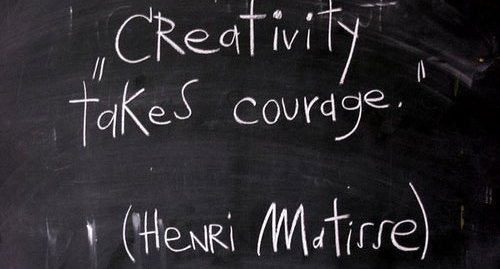There’s often a very subtle difference between those who lead and those who lead well – those who lead well are very forward-focused. If you’re more interested in protecting what is than you are finding the answer to what if you might be in a leadership role, but your likely not leading well. Order isn’t all it’s cracked up to be. In fact, I’d go so far as to say routine is the great enemy of leaders. Conformity to the norm does little more than pour the foundation of obsolescence by creating an environment that shuns change rather than embraces it. Disruption is never found by maintaining the status quo, but it’s most commonly revealed in the chaos that occurs by shattering the status quo.
Smart leaders don’t think “best” practices – they focus their attention on discovering “next” practices. The simple fact of the matter is too many leaders are concerned with fixing things when what they should be doing is breaking things.
The principles outlined in the opening paragraph apply to every facet of the business, but nowhere do they create more impact than when applied to leadership itself. You see, leadership development and succession are only positive practices if they’re applied to those worthy of the investment. Do you ever wonder how businesses can fall from the pinnacle of success to the depths of stagnation in only a few short years? One of the main contributors to corporate stagnation and decline is keeping the wrong leaders in place for the wrong reasons. My premise is a simple one – because the marketplace is ever-changing, corporate leadership must adapt and change with the times in order to survive. Leaders who are not growing simply don’t have the capability to lead a growing organization.
The point I ask you to ponder is this: Leadership teams often espouse the need for change and innovation, but rarely apply this thinking to themselves – why? Ego, pride, arrogance, fear, or just being out of touch with reality can cause major blind spots. Leadership is not a right of entitlement, but rather a privilege that must be earned. Leaders who view themselves as a protected class are leaders not living up to their obligations and responsibilities. Leadership teams on autopilot, while they may be adept at maintaining course, will rarely soar to new heights. If you take one thing away from today’s message it should be this: the most costly legacy system a company can maintain is poor leadership.
A lack of fluidity, development, or contextual savvy can cripple even category dominant brands. Case in point – I recall reading an interview with Jeffrey Immelt, CEO of GE in which he touted the fact that his top 175 executives have been with the company an average of 21 years. While Mr. Immelt may actually believe this is a good thing, I would submit it is far from a foregone conclusion. Creating a fraternity does not constitute great leadership. It is simply not possible that all 175 of these executives have been the best people for their respective positions for the last two decades. A cursory examination of GE’s stock performance over the last decade would tend to support my logic.
Need to reinvigorate a stale enterprise? Try changing the corporate landscape by shifting existing roles and responsibilities, or by bringing in fresh talent from the outside. If you want to drive innovation, lead change, and create growth, stir the pot – go break something. It has been my consistent experience that when the longevity of leadership is brandished as a badge of honor, it is usually just the opposite. The length of someone’s tenure is not nearly as important as whether they are the best person for the job. Smart companies realize that if someone is performing below expectations, they need to be coached to productivity or replaced – there is no third option if a healthy organization matters to you.
Static organizations tend to embrace comfort zones, and are often built upon the “DITWLY” (Did It That Way Last Year) principle. This attitude precludes the advancement of change initiatives and cripples innovation. Albert Einstein said it best when he noted “the definition of insanity is doing the same thing over and over again and expecting a different result each time.” Be the leader who is never satisfied with what is – be the leader who is focused on what if? Savvy leaders understand “fixing” something creates a false sense of completion, whereas “breaking” something creates a vision for a new beginning.
I’m asking you to consider breaking the existing leadership paradigms within your organization. Find a few sacred cows and lead them to slaughter. Examine what you measure and why you measure it. Look at how decisions are made and who is allowed to make them. Inject youth where none presently exists. Replace the office squatters (those who have mentally quit, but failed to physically leave). Don’t reward static thinking, encourage dissenting opinion and diversity of thought. Go break something.
The bottom line is this…Great leaders constantly challenge the present in order to find the path to the future. They challenge themselves, and they encourage others to challenge them as well. Leadership isn’t about being right, it’s about achieving the right outcome. Don’t agonize over this, and don’t ask permission; go break something. Meritocracy or Mediocrity – the choice is yours…
Thoughts?







